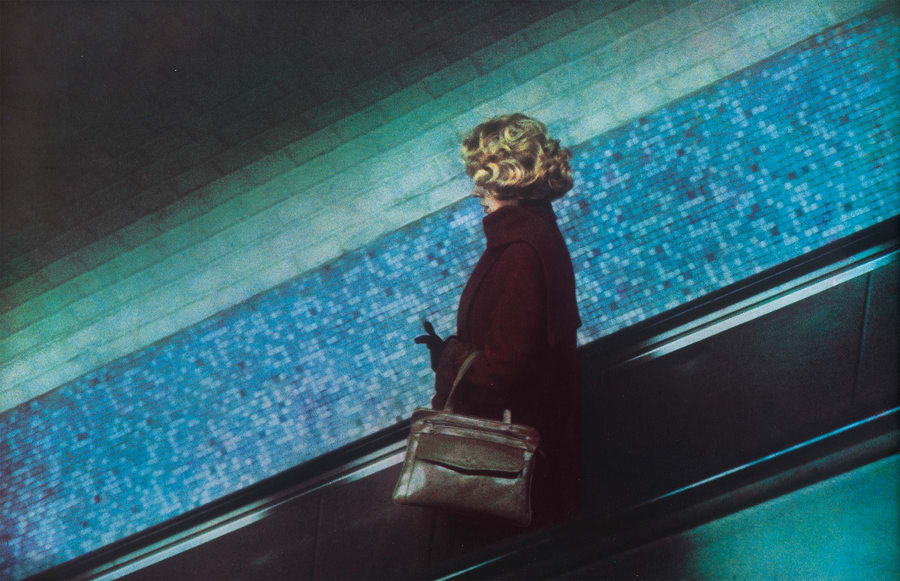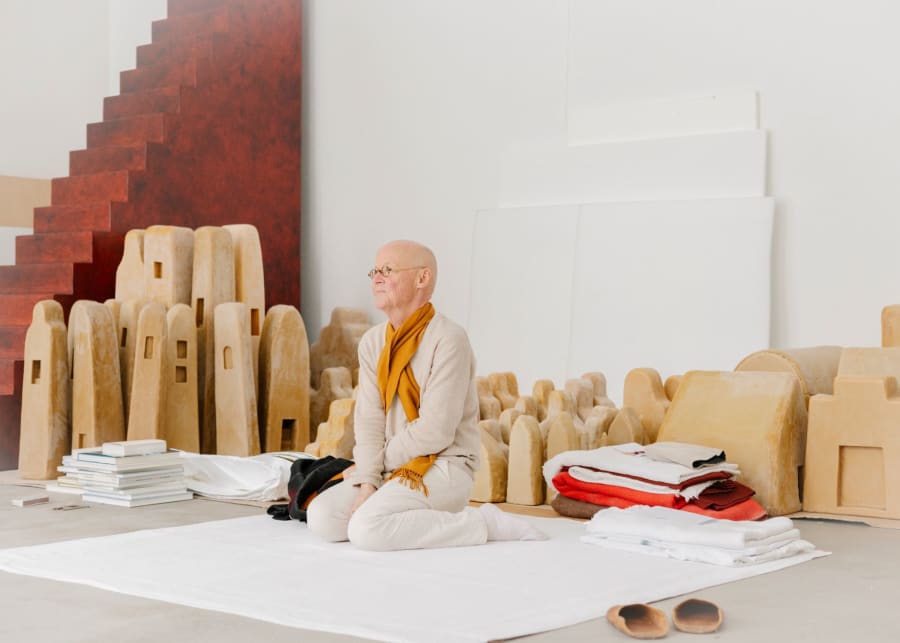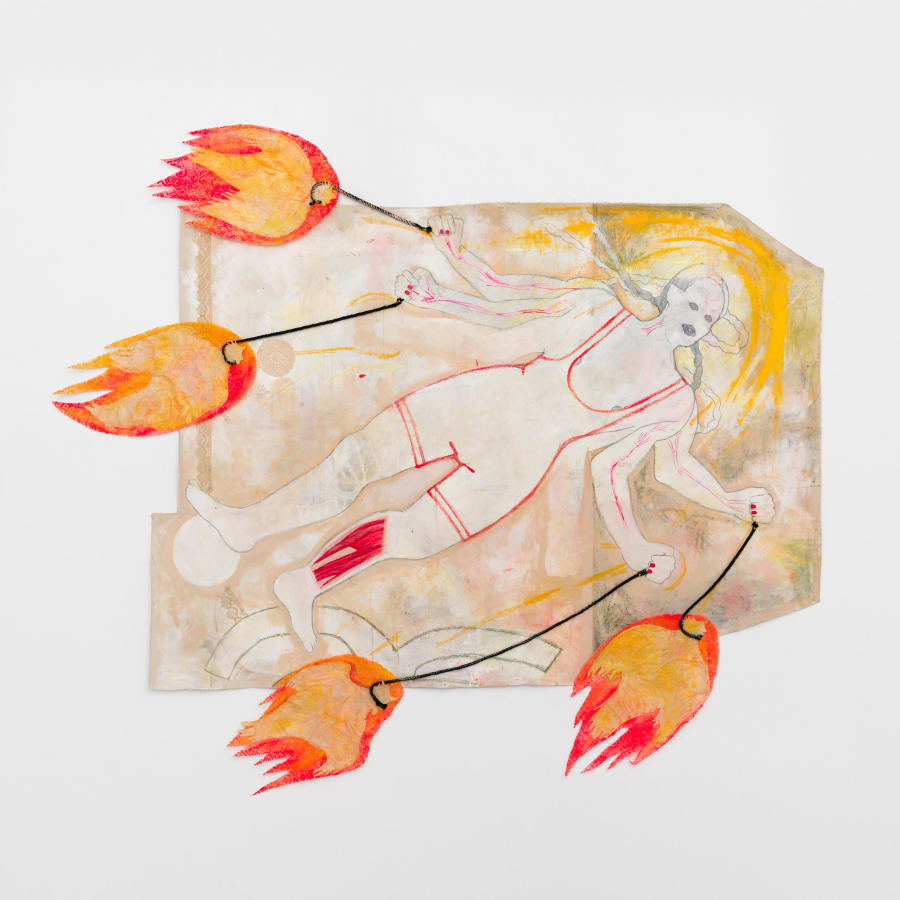From the Belgian border to the beaches of the Opal Coast on the English Channel, France’s northernmost region, Hauts-de-France, is thrumming with artistic energy. The association lille3000 has been organizing inclusive cultural events for everyone in the city since 2004, and this year will be celebrating its 20th anniversary. Last year, LaM (Lille Métropole Musée d’art moderne, d’art contemporain, et d’art brut), celebrated its 40th anniversary in its iconic building in the suburb of Villeneuve d’Ascq. Louvre-Lens, a satellite museum of the Paris institution, opened in 2012, and since then has created a unique relationship with its audience. Dunkirk’s Triennale Arts et Industrie, created in 2019, has just wrapped up its second edition, confirming its position as a beacon of artistic energy. Alongside these institutions are numerous other successful collaborations between public and private organizations, such as the Frac Picardie in Amiens, one of the government-supported regional contemporary art collections dotted around the country, which is helping to nourish an area already bursting with cultural activity.
Lille’s ongoing transformation
lille3000 has been met with undeniable success, with almost 2 million people visiting its 2022 edition, titled ‘Utopia’. As France enters the home stretch ahead of the Olympic Games in July this year, the team at lille3000 has only one word on their lips: ‘Fiesta!’ That’s the title for the festival’s 7th edition, which will coincide with the 20th anniversary celebrations of Lille being crowned European Capital of Culture back in 2004. In order not to clash with the sporting calendar, the festival will be pushed back a year, to April 2025, when it will spread out across 95 communes in the Lille area, fostering a sense of community, sharing, and conviviality.
Traces of Lille’s industrial history are apparent in the magnificent façades of its townhouses, as well as its abandoned factories. For lille3000, it was decided to renovate and create multidisciplinary cultural spaces, such as its famous Maisons Folies, by using already existing infrastructure. The conversion into a contemporary art space of the old postal sorting office, Le Tripostal, is just one example to come out of this foundational creative period. Shows there have included presentations of major collections, such as the remarkable 2007 exhibition, ‘Passage du temps’, a selection of works from the Pinault Collection. Jean-François Chougnet has been the director of lille3000 since October 2023; previously, he ran Marseille-Provence 2013, a season of culture which took place in the southern city and the surrounding region of Bouches-du-Rhône during Marseille’s tenure as European City of Culture. Chougnet wants to draw attention to the participatory dimension of the Lille event, which is deeply anchored in the region, but with exhibitions that attract an increasing number of foreign visitors, especially from Belgium. He has also been struck by the cooperation between different cultural players across the region: ‘The North is one of the few French regions in which there is a real structure of dialogue between museums,’ he says enthusiastically.
‘Since Lille 2004, museums have learned how to work with performing arts institutions,’ asserts Benoît Villain, who leads cultural programming at LaM. He observes that he has been astonished by the cultural transformation of the town he grew up in. The museum marked its 40th anniversary last year with three excellent exhibitions of work by Isamu Noguchi, Mohamed Bourouissa, and Anselm Kiefer, as well as a new display of its collections, which create a unique dialogue between Modern, Outsider, and contemporary art. LaM is now getting ready for its next project: a large Wassily Kandinsky retrospective in 2026, in partnership with the Centre Pompidou in Paris.
Amiens’ plans for visual arts
Halfway between Paris and Lille, the town of Amiens is known for its gardens and canals. The historic capital of the Picardy region, whose cultural policy until recently was mostly concentrated on theater and street art, now intends to create a center dedicated to animated films. The architect Alexandre Chemetoff has been tasked with renovating the former sorting office in the town center, and building work will begin this year for a planned opening in the summer of 2026. The aim is to bring together the comic book festival, On a Marché sur la Bulle, the digital art department of the École supérieure d’art et de design d’Amiens (known as ésad), and Frac Picardie. The latter boasts a fantastic collection of works on paper, from Marlene Dumas to William Kentridge, and its director Pascal Neveux is hugely enthusiastic about a new project based around ‘Ecritures Dessinées’, or drawn writings, supported by both public and private organizations. ‘The whole sector is going to be represented in this one place,’ he says. There are plans to create a second establishment in the north of the region, where a rich ecosystem has developed around the audiovisual sector between Lille, Roubaix, and Tourcoing, including film production companies, art schools, and a festival celebrating TV series.
Dunkirk gets a boost from its triennial
On the edge of the North Sea, Dunkirk is bordered by a landscape of sand dunes that shimmer under a light that has long fascinated painters, photographers, and filmmakers. For more than 10 years, the Frac Grand Large has been based in an impressive building that used to be a naval workshop for the port city. This is where part of the second edition of the Triennale Arts et Industrie 2023 took place, the title of which, ‘Chaleur humaine’, was linked to the theme of energy. The project was launched by the Frac Grand Large and the Lieu d’Art et Action Contemporaine (LAAC), with a number of private partners and sponsors supporting it. ‘The other characteristic of this triennial,’ says Keren Detton, the director of Frac Grand Large, ‘is that it gives value to the research work that goes into making public art collections, thanks to a dual partnership with [two Paris institutions], the Centre national des arts plastiques (CNAP) and the Centre Pompidou, which has resulted in the loan of many artworks. Its approach is clearly focused on contemporary creation.’
The triennial, which draws people from the region as well as foreign visitors from Belgium and the UK, revolves around one major exhibition, which this year was seen by more than 50,000 visitors. But for Detton, it is about more than what happens during its run from June to January. ‘The energy also comes from everything that happens before that, all of the meetings in the region that have happened prior, and everything that comes from it afterwards.’ As a result, the second edition of the triennial led to a joint agreement with the triennials of Bruges, Kortrijk, and Beaufort, across the border. The aim is to share information around good practice, make exhibitions have a longer-lasting impact, and to work together on practicalities like production and transportation.
Louvre-Lens, a cultural utopia in an old mining basin
Under the direction of Marie Lavandier, who stepped down in 2023, Louvre-Lens has earned itself a loyal following over the course of the last decade. Families, who are for the most part local, make up more than a quarter of the visitors and its emblematic Gallery of Time runs through 5000 years of art history. But this free museum is now at a pivotal moment and will be renovated at the end of 2024, to create an entirely new visitor experience and make a new presentation of 200 major works from its collections. From spring next year, the grounds of Louvre-Lens will host a piece by Kapwani Kiwanga, who is representing Canada at this year’s Venice Biennale.
Opposite the museum, the residency run by the Pinault Collection is a valuable example in a region where such initiatives are still far too rare, but are starting to become more common. Céleste Rogosin, who graduated from Le Fresnoy art school in Tourcoing in 2021, participated in the Archipel program for emerging artists, carrying out a research project on the areas of Boulogne-sur-Mer and Calais at the end of 2022. She now has a new residency at the Pinault Collection, and since October 2023, she has been continuing her exploration of the landscape, which she discovered through the films of Bruno Dumont, a filmmaker who hails from northern France and who knows the region’s idiosyncratic light very well. Rogosin’s project will soon be shown at the Frac Grand Large – further proof of the good energy circulating in the region.
Anne-Cécile Sanchez is a freelance journalist and editor based in Paris. She is a regular contributor to Le Journal des Arts and Projets Médias.
All photos by Louis Canadas for Art Basel.
Caption for top image: Association Fructôse - Les Mouettes, Dunkirk.


